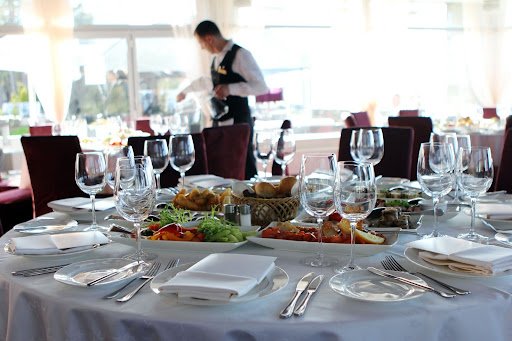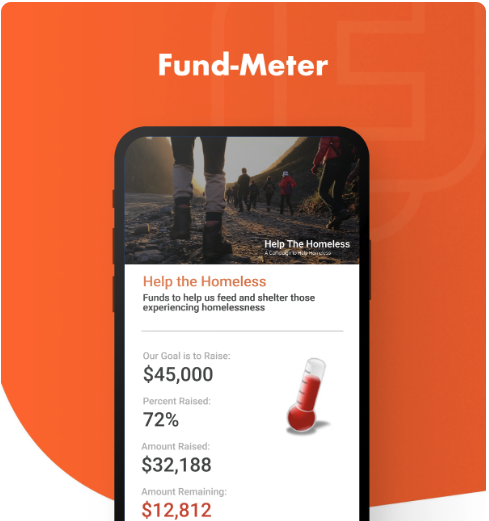How to Stop Donors from Leaving Your Fundraising Event Early
You’ve spent weeks, months even, planning your organization’s fundraising event.
You’ve set an ambitious, but still attainable, goal for donations before the evening ends. But then slowly, while the dinner is still in full swing, you start to notice guests trickling out. Maybe silent auction bidding or raffle entries are still open, but you haven’t even gotten to your last push for donations.
When you’re hosting a fundraising event, whether it be an evening banquet or a prayer breakfast, you always want your donors to stay until the very end. Donors leaving early generally indicates a lack of engagement.
Whatever justification they have for leaving early—beating traffic, saving a few dollars by letting the babysitter off early, catching the end of a baseball game—is higher on their list of priorities than helping you achieve your goal.
Of course, people may have family or personal emergencies that they need to attend to immediately, but you always want your donors to feel like they are doing something worthwhile by attending your events and donating to your cause.
You want them to feel purpose in staying the entire time, which will also help with donor retention rates.
Need some tips to keep your guests from leaving before the opportunity to donate ends?
Build a lasting connection to your organization with these five tips to stop donors from leaving your fundraising event early.
Never Let Your Event Run Over
One of the worst things you can do for your fundraising event is to let it run over on time.
If you haven’t made it through all your planned events, you might consider it “leaving early.” But when your guests walk out at the end time you listed on your invitation, they’re certainly not going to see it that way!
When you’re hosting a fundraising event, you’re spending money with the hope of earning more money back to support your organization. You’re paying for access to the venue, catering, decorations, entertainment, and staff. At the end of the event, you divide how much money you spent by the amount of donations you received to get the average cost of each dollar earned. The lower that number is, the more cost-effective your event was. If it’s $1 or higher, you either just broke even on your fundraiser, or worse, you lost money.
If your event runs over, you may end up having to pay the event venue or staff extra. This will raise the average cost it took you to raise one dollar.
Also, if the event goes longer than you told your donors it would, they are likely to become impatient and frustrated and feel as though their time was not respected.
They may have hired a babysitter for the night, who they will now have to pay extra, or arranged to be picked up at a certain time and are forcing their ride to wait for them.
If your event is in the middle of the day— like a brunch, luncheon, or tea—you’ve now disrupted their whole schedule for the rest of the day. This by itself can put them in a less generous mood, and if they end up spending extra money to accommodate your poor scheduling then they have less money to donate.
Development Expert Jim Dempsey shares that on average, nonprofits lose $1,000 per every minute that an event goes over. 5 minutes over, $5,000 lost, 10 minutes over, $10,000 lost. You get the point.
Jim shared with me recently that a nonprofit he knows went 20 minutes over on time last year and their event made $20,000 less than the consistent income they’d seen from previous years!
Does that thought make you as sick as it makes me?! Such a horrible financial loss to have to realize first-hand. Hopefully, this example will save you from the same mistake!
If at all possible, end your event early.
As long as you have wrapped up all your planned activities and delivered your final appeal, you can thank your guests for attending and send them off. This way, they won’t have the chance to duck out before donations close and it will leave them with a more positive impression of your organization going forward.
A good way to keep your event on time or under is to script it out in advance and do a full run-through of all activities. Pad your timing so the event is set to end early, that way if things run over by a minute or two you can still be flexible without cutting anything important.
If you are using technology, make sure everything is properly connected, charged, and working as soon as you get to the venue. Arrive as early as you are able and allow extra time for setup, so you don’t risk a late start.
Using event management software for nonprofits, like FundEasy’s Attendance, can help you run your sit-down meal fundraising events, from elegant galas to casual spaghetti dinners, smoothly and efficiently.
By using Attendance, you can speed up your check-in process and easily make any last-minute changes or accommodations. The program’s meal choice and seating chart functions help catering staff get the right meals to the right attendants in less time.
Overall, this could be the best efficiency tip yet!
Engage Donors Before the Event Even Starts
Engaging donors is key to keeping them from leaving your event too early.
You can start working on engagement in the weeks leading up to your event.
Once donors have registered to attend your fundraiser, share more information about the goal of the event and who or what will directly benefit from the fundraiser. Do as much as you can to connect your event with the reasons they donate to your organization to begin with.
Sharing impact stories is an effective way to get donors invested. Impact stories highlight specific instances of how funds raised at past events have been used to improve communities or further your organization’s cause.
You should also focus on establishing genuine connections between your organization’s leaders and your donors. Adding personalized touches to invitations like addressing the envelopes by hand or having a director sign each one makes your guests feel like a valued addition to your event.
When you can, take time to meet your donors and guests face-to-face. It might not be possible to arrange a meeting with every single donor before the event is scheduled, but there should be a concerted effort to have your executive staff and board make rounds of the room and connect with donors during the event.
The earlier you can get to people, the better chance you have of making them feel like staying through to the end of the event is a valuable use of their time.
If your event has Table Hosts, consider also asking your hosts to help communicate this sentiment to your guests.
The goal here is to have your guests be enthusiastic about your event and committed to making sure you reach your fundraising goals before they even arrive. They should feel like they are taking an active role in the success of your campaign.
For more tips on getting your donors engaged, especially your major donors, read our post on 10 Strategic Ways to Engage Major Donors in Donor Events.
Keep the Focus on Your Appeal
Once you’ve established a sense of urgency and connection with your cause, you want to keep that momentum going through the event. Development expert Jim Dempsey has been on our blog before to talk about why your fundraiser needs a compelling appeal and how to construct one.
To summarize the webinar, your appeal is your request for support from your donors. To build a compelling appeal, you first have to identify a problem. Use real-life examples and personal testimonies of people or communities who have struggled.
The next step is to identify the solution and how your organization provides it.
What services, programs, or projects do you perform to directly address those unmet needs? Identify the specific cost, provide exciting opportunities for donors to contribute, and explain what tangible difference one person’s donation can make.
Pepper reminders of your appeal throughout the event to keep your donors focused on why they are there and how their presence and participation make an active difference in the world.
Of course, your event will probably include speakers or a video presentation designed to highlight appeal but think of other ways you can keep it at the forefront of the attendee’s mind. For example, you could have cards sharing a testimonial or highlighting a project your organization has completed set on each table for guests to peruse.
Periodically share how close you are getting to your goal or have some kind of donation meter on permanent display throughout the event. This can easily be achieved by using FundEasy’s Crowdfunding platform for donations at your event.
Share when you reach smaller milestones as well. Not only will this encourage your donors to stay to see the final results, but it will also remind them why they came in the first place. Their attendance has a purpose, and that purpose is to contribute to a cause that they care about.
As much as you want to make the event enjoyable for guests, the appeal needs to be woven through every aspect of the activities.
Keep Speeches and Presentations to a Minimum
One way to basically guarantee that your donors will leave your event early is to bore them.
Even if you successfully drive home the importance of your fundraiser’s mission, guests are not likely to stay for the whole event if they are not enjoying themselves. Guests can easily become bored by long speeches and presentations.
Is this contradictory to the advice that you should stress the importance of the fundraiser’s mission as hard as you can? Not at all. In fact, the longer your speakers go on, the less likely your audience is to actually listen to them. Donors can’t grasp the importance of your mission if they’ve tuned out what your presenters are saying.
In the book The 3-Minute Rule, Brant Pinvidic explains why you only need 3 minutes to get through to your audience when giving a pitch or presentation. By the end of 3 minutes, your listeners have already formulated their opinion on your appeal.
Focus on developing a concise and compelling argument that can be delivered in that time frame. Always prerecord testimonials and if the person who gave it is in attendance, ask them to stand after you play it. This gives you the ability to edit the testimonial down to its most convincing points and avoid nervous rambling or stage freight.
If you have to give any organizational updates, keep them brief.
Include more detailed reports in your program and on the screen while your guests are eating dinner.
Humans process information primarily through our sense of sight. Well-designed visual aids will get a point across much more effectively than even the best speech.
Instead of forcing guests to sit through lengthy presentations, set up displays throughout the event that guests can read at their convenience. This also creates more opportunities for your guests to mingle with you and each other.
A personal conversation about the benefits an organization can provide is more likely to resonate with donors than a speech addressed to the entire room.
Schedule Wisely
The day and time you hold an event can make or break whether your donors stay for the whole time or leave early.
If you are holding a breakfast, consider whether your guests will have taken time off work to be there and what time they may need to leave to head back to the office. If you know a majority of the guests at your charity luncheon have school-aged kids, figure out what time they will need to leave to make a pick-up. Also, be aware of events going on in the broader community and make sure your event does not compete.
If you can help it, don’t schedule your vision dinner for the same night as a big game your local sports team is competing in, or the night before the first day of school when you know parents will be scrambling to get everything ready for the morning.
If you have any doubts about what day might be best for your event, you can always survey your guests for their preferences.
Maybe guests would be more likely to attend your gala on a Friday night when they don’t have to get anywhere the next morning as opposed to a Thursday night when they’re focused on getting through one last day of work.
Non-profit organizations like yours sustain themselves through fundraising events, so it is critical you keep your donors engaged from start to finish.
Attendance by FundEasy is complete event management software specifically designed to help nonprofit organizations run successful events and bring in the revenue they need to keep improving their communities.
To learn more about our platforms and how they can help your organization, Schedule a Meeting with our sales team today!
If you'd like to learn more about our Peer-to-Peer, Attendance, or Crowdfunding products, please reach out! We'd love to chat.
Also, if you haven't joined already, we have an exclusive Facebook Group just for our customers! If you are a current FundEasy Customer and would like to join, go here to learn more and request to be added!
Crystal Hoag
This article was inspired by our customers and written to encourage your fundraising efforts. Although we work with nonprofits and events daily, our team members are not Event Consultants. We encourage you to consult with your event consultant, executive team, and/or affiliate organization before making any major changes to your events.











